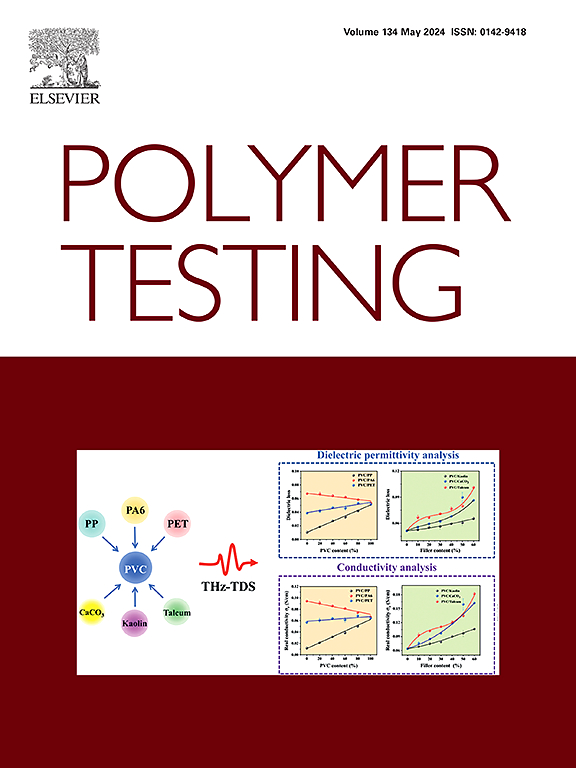Advancements in butt fusion jointing of HDPE pipes: A comprehensive review of fusion conditions and joint integrity assessment techniques
IF 6
2区 材料科学
Q1 MATERIALS SCIENCE, CHARACTERIZATION & TESTING
引用次数: 0
Abstract
High-density polyethylene (HDPE) piping systems are increasingly recognized for their exceptional corrosion resistance, flexibility, long-term mechanical durability, leak-free monolithic joints, fast and easy installation, and overall cost-effectiveness across a range of industrial sectors, from municipal water and gas networks to safety class nuclear power plant piping applications. The long-term reliability of these systems hinges critically on the integrity of butt-fusion (BF) joints, which often represent the most vulnerable points under operational stresses and environmental conditions. This review serves a dual purpose, it distils best practices for fusion-condition optimisation and evaluates joint-integrity assessment methods, offering a unified guideline for butt-fusion jointing (BFJ) of HDPE pipes. Fundamental fusion parameters such as fusion temperature, interfacial pressure, and heating/cooling durations that govern polymer chain interdiffusion and resultant joint strength are explained. Key standards are examined for their differing recommendations, underscoring the need for harmonized global guidelines. Standard joint integrity testing methods and recent advancements in mechanical testing, ranging from short-term tensile and impact assessments to long-term creep and slow crack growth (SCG), were critically reviewed. Emerging approaches such as, tapered-waist tensile (TWT) specimens, and hydro-axial tension (HAT) evaluating the full joint thickness, offer steps toward addressing the pronounced limitations of existing test methods revealed. The review concludes by highlighting critical research gaps, including real-time joint monitoring for proactive defect mitigation, adaptive multi-stage pressure protocols, and the development of reliable qualification and testing methods specifically tailored to large-diameter, thick-wall HDPE pipes. Addressing these issues is pivotal for advancing BFJ performance, ultimately fostering globally standardized, next-generation HDPE pipelines with trustworthy reliability in high-stakes engineering applications.
HDPE管材对接熔接研究进展:熔接条件及接头完整性评估技术综述
高密度聚乙烯(HDPE)管道系统因其卓越的耐腐蚀性,灵活性,长期机械耐久性,无泄漏的整体连接,快速简便的安装以及从市政供水和天然气网络到安全级核电站管道应用的一系列工业部门的整体成本效益而越来越得到认可。这些系统的长期可靠性在很大程度上取决于对接融合(BF)接头的完整性,这通常是在操作应力和环境条件下最脆弱的点。本综述具有双重目的,它提炼了融合条件优化的最佳实践,并评估了关节完整性评估方法,为HDPE管对接融合连接(BFJ)提供了统一的指导。基本的熔合参数,如熔合温度、界面压力、加热/冷却时间,这些参数决定了聚合物链的相互扩散和最终的接合强度。审查了主要标准的不同建议,强调需要统一的全球准则。标准的关节完整性测试方法和最近的力学测试进展,从短期拉伸和冲击评估到长期蠕变和慢裂纹扩展(SCG),都进行了严格的审查。新兴的方法,如锥形腰拉伸(TWT)试样和水轴拉伸(HAT)评估全关节厚度,为解决现有测试方法的明显局限性提供了步骤。该综述最后强调了关键的研究差距,包括主动缺陷缓解的实时联合监测,自适应多级压力协议,以及专门针对大直径厚壁HDPE管的可靠鉴定和测试方法的开发。解决这些问题对于提高BFJ的性能至关重要,最终促进全球标准化的下一代HDPE管道在高风险工程应用中具有可信赖的可靠性。
本文章由计算机程序翻译,如有差异,请以英文原文为准。
求助全文
约1分钟内获得全文
求助全文
来源期刊

Polymer Testing
工程技术-材料科学:表征与测试
CiteScore
10.70
自引率
5.90%
发文量
328
审稿时长
44 days
期刊介绍:
Polymer Testing focuses on the testing, analysis and characterization of polymer materials, including both synthetic and natural or biobased polymers. Novel testing methods and the testing of novel polymeric materials in bulk, solution and dispersion is covered. In addition, we welcome the submission of the testing of polymeric materials for a wide range of applications and industrial products as well as nanoscale characterization.
The scope includes but is not limited to the following main topics:
Novel testing methods and Chemical analysis
• mechanical, thermal, electrical, chemical, imaging, spectroscopy, scattering and rheology
Physical properties and behaviour of novel polymer systems
• nanoscale properties, morphology, transport properties
Degradation and recycling of polymeric materials when combined with novel testing or characterization methods
• degradation, biodegradation, ageing and fire retardancy
Modelling and Simulation work will be only considered when it is linked to new or previously published experimental results.
 求助内容:
求助内容: 应助结果提醒方式:
应助结果提醒方式:


